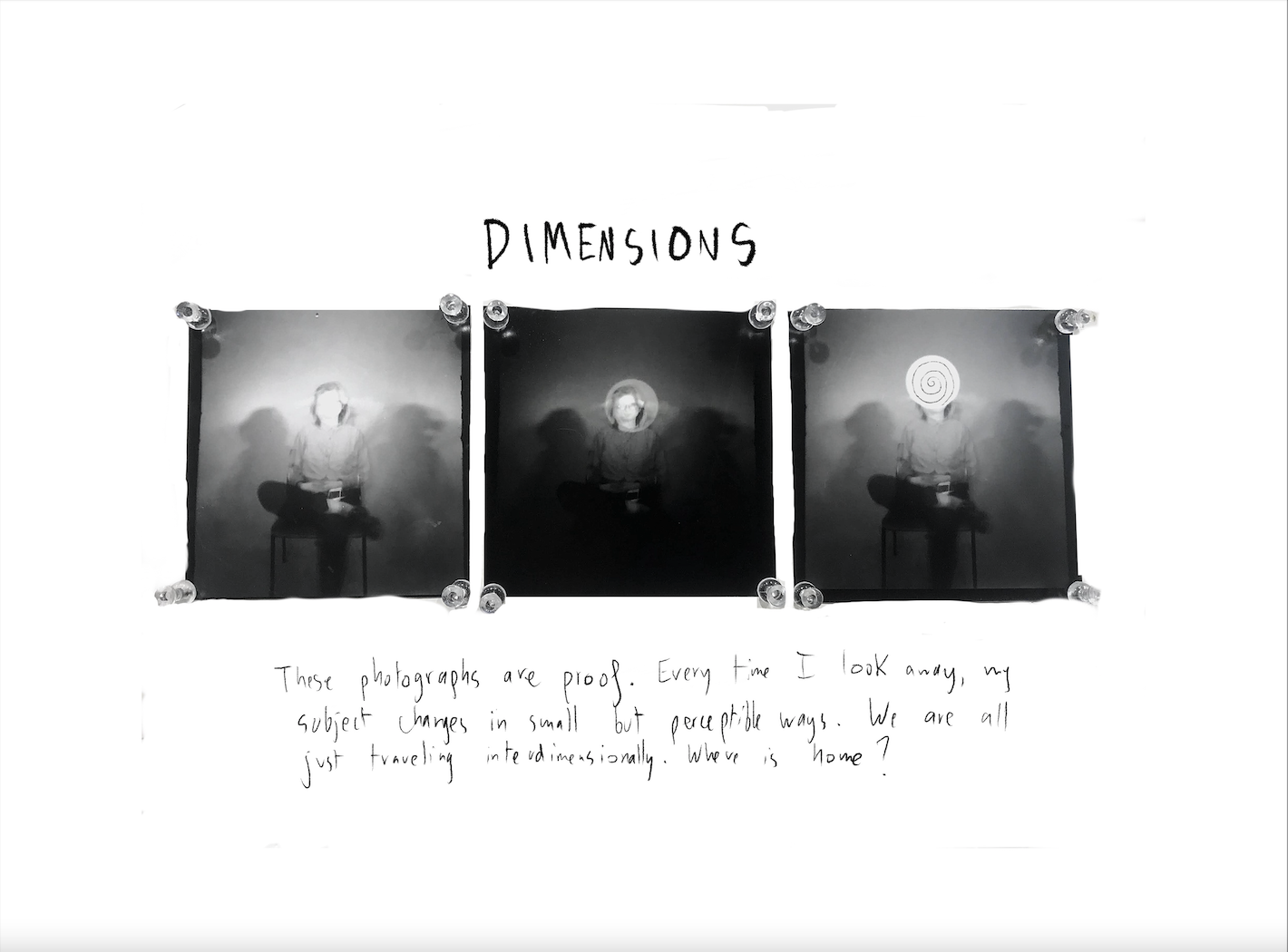Title: Entering
Medium: Animated Digital Photography
Description: Inspired by Tim Burton’s entrances to his exhibits, this piece is a yonic and surrealist take on the idea of “entering.” The large figures are watching spectators move in and out of the exhibit. They are guardians of the border between “our world”, outside, and “a new world”, the exhibit. As figures existing in this liminal purgatory, their images alternate between normal dimensions and surrealist, Salvador Dali like disfigurements.
Exhibition: This image depicts how an audience would enter the museum exhibit. The animation of the piece Entering is projected onto a large white wall. The door to enter the exhibition space is placed in the bottom middle, as pictured below. The door has a spiral painted on in thick, acrylic, black wall paint.
Title: Pulsing
Medium: Animated Digital Photography
Description: Pulsing is an attempt to give sanguine life to the digital self. The piece alternates between a desaturated image of me with bleach in my hair, implying disguise and impersonation for the online world. The same image is divided into smaller colorful segments reminiscent of The Matrix’s references to computer coding. The transition between both images is intended to mimic the body’s pulsing and throbbing between the painstaking efforts to form an appearance in the material realm and the ease of color saturation in the digital, thereby giving tactile existence to the resulting digital image.
Title: I Want Your Eyes
Medium: Digital Photography
Description: This looping piece places the influences of Marshall McLuhan and Barbara Krueger onto the idea of the internet self: how is the self’s authenticity multiplied and divided across our digital realities? The flickering and static image represents the inherent strife between reality and simulation. The medium, digital photography, suspends the viewer into this constructed world while reflecting the sensationalist entertaining advertisement of the self by removing the eyes of the subject and replacing them with the eyes of the viewer.
Title: Negative Body Parts
Medium: Analog Photography, Digital Layout
Description: Laid out in an arrangement reminiscent of photo negatives, these analog images inspect and isolate fragmented parts of the body: an armpit, an eye, an arm. The camera, placed alongside them, is thereby the agent of attachment and unification of the body. Reminiscent of Marshall McLuhan’s The Medium Is The Massage, the artist, the image maker, has become one with the camera, an extension of the body.
Exhibition: The audience is brought into a hallway that extends for approximately fifteen feet. The walls are screens that project the piece Negative Body Parts: once on the left and once on the right. The audio playing overhead is a combination of clapping and camera sounds, thereby combining the corporal and the mechanical into an unnerving cacophony that implies a feeling of being observed and recorded.
Title: To Georgia
Medium: Analog photography, digital layout
Description: Inspired by Alfred Stieglitz’s nude photographs of Georgia O’Keefe, these images imagine O’Keefe’s descent into a nervous breakdown. The sequence of images can be read from left to right, like a comic book, or like an alternate reality in which all versions of this person exist at the same time. Under it, I’ve placed a section of a letter by Frida Kahlo to Georgia O’Keefe, imploring her to send updates from the hospital. Frida’s voice is the voice of reality, and her neat writing is barely tethered and almost hostile to the depictions of mental illness. . The correspondence and relationship between Kahlo and O’Keefe is the story of all women, caring for one another, losing their minds, and awakening their creative geniuses at the same time.
Title: Dimensions
Medium: Pinhole photography, Digital Enhancement
Description: Inspired by Duane Michals’ portrait photography, this is a collection of three pinhole photographs that are exhibited alongside hand scribbled notes. The subject is placed directly looking at the viewer. In each image, as if moving through time, the view of the body changes ever so slightly, highlighting or erasing certain parts. By the last image, the subject’s face has disappeared entirely. As we move through time, this piece suggests that we are moving through dimensions. Tracing the morphing thread of “the body,” we must ask where we truly exist, and what may be lost as we collapse ourselves into one reality.



